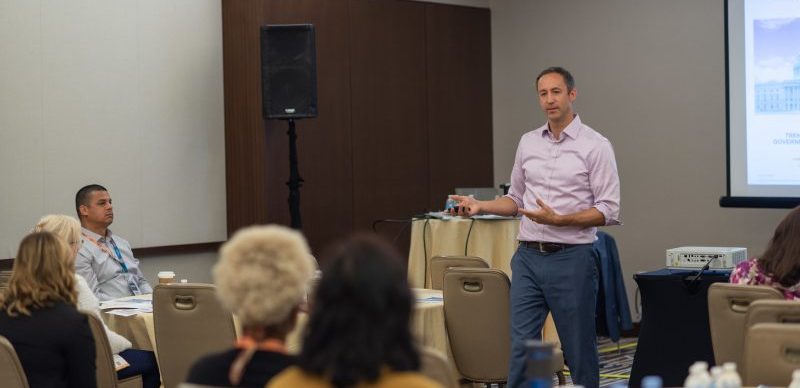The pace of technological invention is accelerating, as brilliant inventors build one form of technology onto another to create what was previously unimagined. But while the landscape of technology today seems unmistakably unprecedented all the time, the foundations of innovation are the same as they were many years ago.
Emerging technologies are so named because they’re original, but despite intimidating and arcane names, government leaders need to think of them through the lens of innovation – not the lens of technology.
Craig Fischer, Program Manager for the Office of Financial Innovation and Transformation, is thrilled about the potential of emerging technology in government, but it’s not because of the tech side of things. Working within the Treasury Department, which is responsible for accounting, paying and controlling the money of the federal government, Fischer’s job is to manage money as easily and quickly as possible – which has led him to investments in several forms of emerging tech. Emerging technology can help the money get from point A to point B with greater reliability, efficiency and speed.
Therefore, Fischer views emerging technologies in government workforces just as any other innovation. And despite the newfound technology coming about in 2019, Fischer uses a framework of old to analyze the recent trends that are permeating the tech sector.
“You have to play the long game when it comes to emerging technology,” Fischer said during a workshop at the 2019 NextGen Government Summit. “Otherwise, you’re just going to get really incredibly frustrated.”
Peter Drucker, a renowned 20th-century business consultant and author, published a framework for identifying and expanding on opportunities for innovation in 1985 with his book, “Innovation and Entrepreneurship.” He identified seven sources for innovative opportunity: the unexpected, incongruities, process needs, industry and market structures, demographics, changes in perception and new knowledge.
Fischer identified a common approach to considering innovation using classical ideas. Take a step back, he said, and try to disown the existing view of processes and problems within an organization or sector. Instead, just think, if starting all over how should the problem be solved?
Then, look at what’s out there and how it might fit. This approach can be applied to all emerging technologies.
Fischer told attendees not to believe the grandiose promises or the baseless slander of emerging technologies as they go through media cycles of hype and disillusionment. Instead, define a use case, and see if there’s a fit.
That’s how the Treasury Department has introduced hot-button technologies to alleviate the burden on workforce and move forward. With robotic process automation (RPA), which Fischer thinks has moved past the “emerging technology” phase, the Treasury Department developed several bots in the Bureau of the Fiscal Service to deal with reconciliation and data processing. Chatbots – and artificial intelligence – are being brought in as well to answer questions from customers on a variety of issues, such as account balances.
Blockchain is also being featured at the Bureau of the Fiscal Service to track assets and manage licenses. It allows employees to verify the transactions of phones and physical items during their onboarding without an intermediary. The employee simply types in a code certifying that they received and have access to the device, and blockchain verifies the transaction.
There’s no middle man.
“That’s a powerful idea,” Fischer said.
Following a session where attendees looked at what up-and-coming technologies could do for them, Fischer encouraged attendees to dig further. What future advancements could fundamentally change government work? Emphasizing ideation, Fischer said that emerging technology requires risk. A potential fix shouldn’t be scrutinized too much before a pilot or proof of concept is tested. Go off of instinct or intrigue at first at a small scale, he said, and then build it out down the road if it proves effective.
“The worst thing we can do for emerging technology is to try to explain the emerging technology,” Fischer said. “If you’re trying to explain how smart dust works, you lost me. But if you explain the objectives, the advantages, what you can do with it … then I’m listening.”






Leave a Reply
You must be logged in to post a comment.